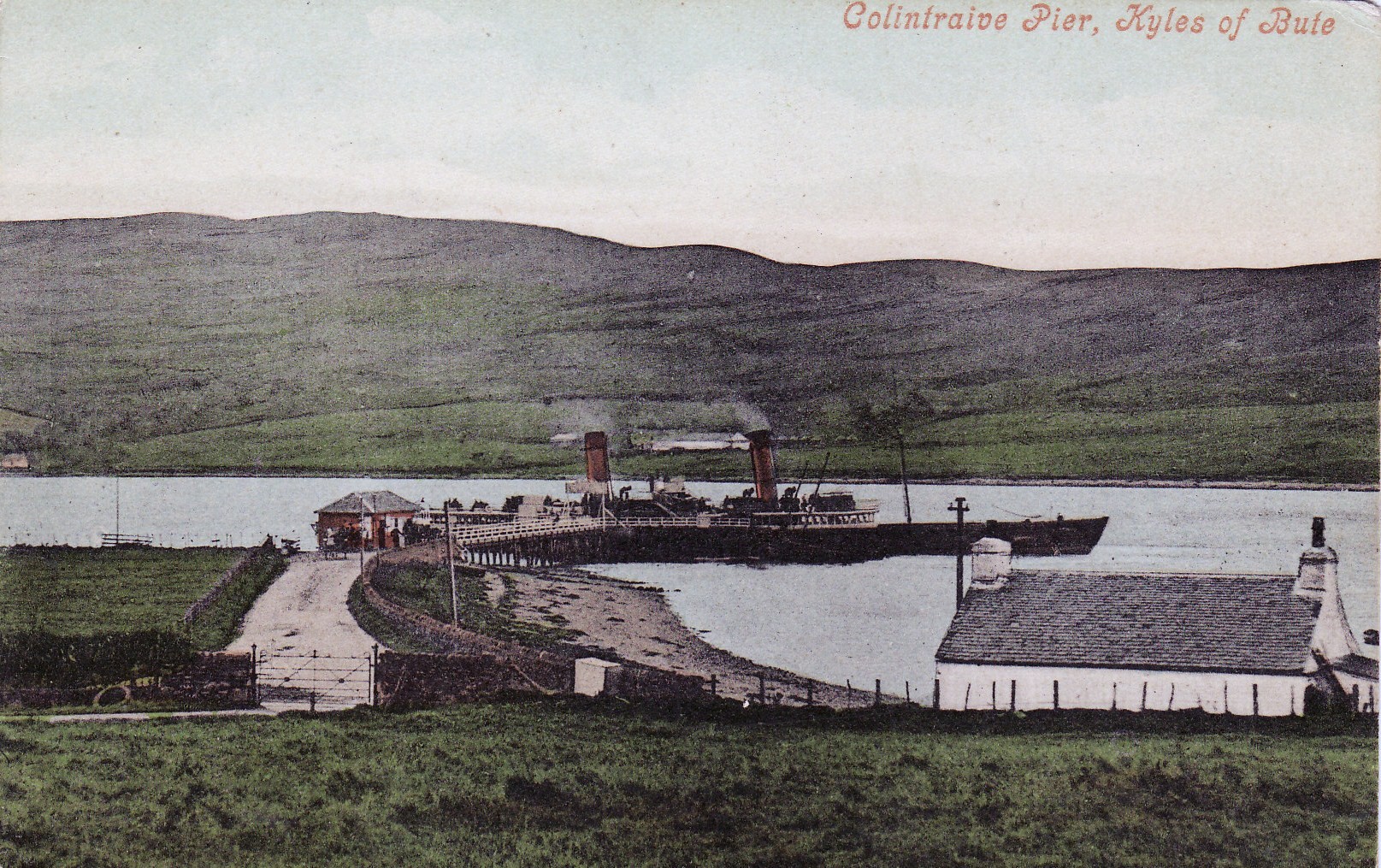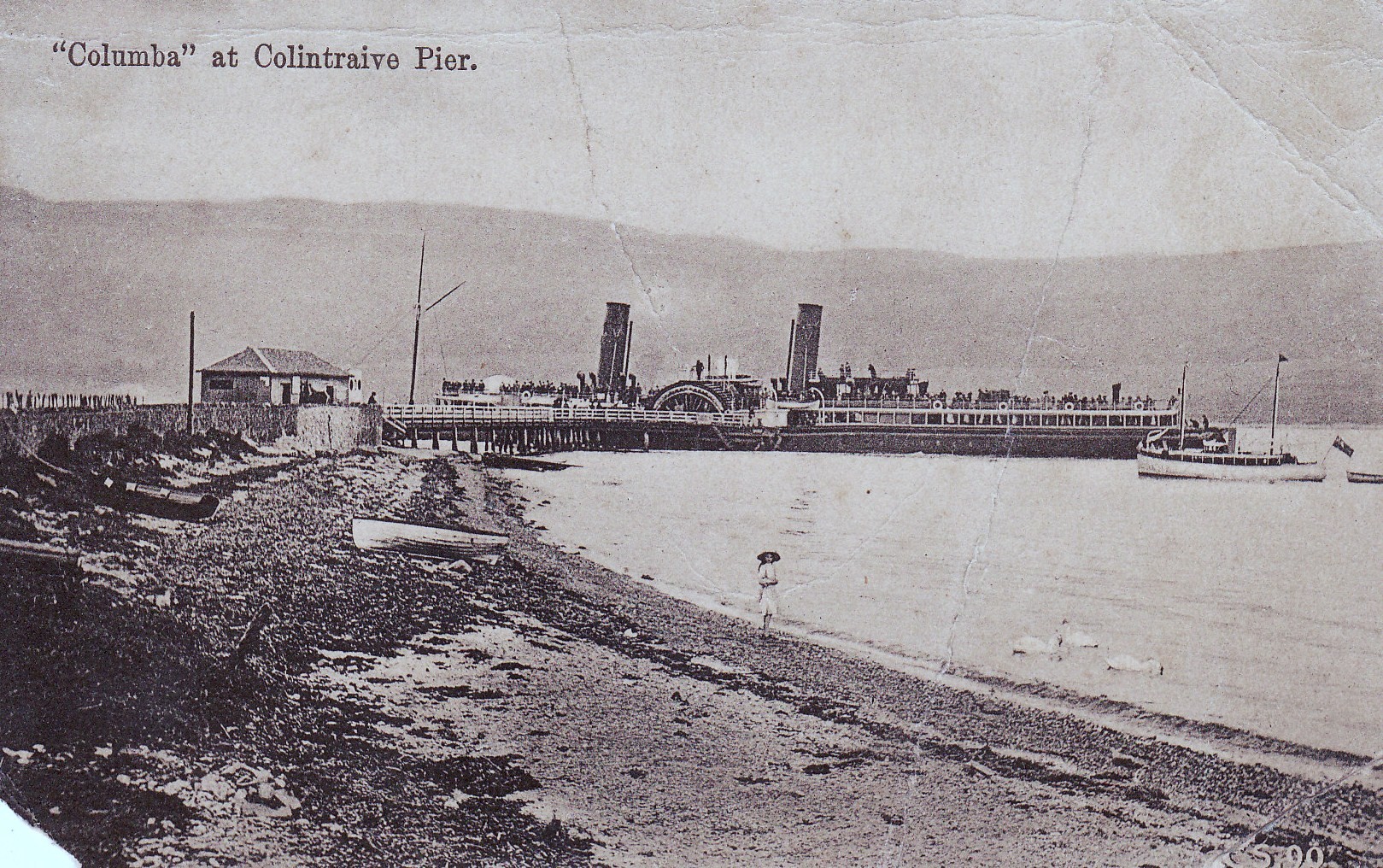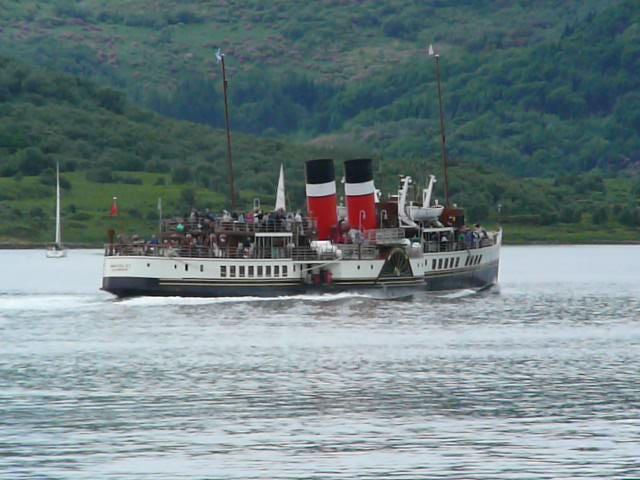Steamer services began from Glasgow to the upper Clyde in the 1820’s and by the 1850’s over 30 steamers regularly served all of the Clyde ports, with ‘tourists’ often writing descriptions of their journeys.
The pier at Colintraive was opened in about 1850 and the village was on the timetable of the steamers that were on their way to Arran or on the famous ‘Royal Route’ via the Kyles to Ardrishaig.

The steamers brought with them the summer visitors. “Doon the Water” became a popular summer journey and, of course, sending postcards to friends at home was almost obligatory. Colintraive Hotel had a “Moderate Tariff” and a Kyles of Bute Coach Tour, affording views of the most charming Highland scenery. The village also had new shop and a post office
By 1900 there were 46 steamers at work in the Firth of Clyde during the summer months. They were capable of carrying more than 52,000 fare paying passengers.

The Second World War stopped all but essential steamer traffic with the grey painted Lochfyne remaining to take the mail to the Kyles villages. When the war was over the Colintraive pier was in disrepair and it was closed about 1948.

Regular service through the Kyles continued, but not stopping at Colintraive, though freight was then dropped off when the St Columba slowed down and made a quick transfer to Archie Clark’s boat lying along side. The last regular steamer, Lochfyne, was withdrawn in 1969, shortly after the ‘new road’ improving access to Tighnabruach was opened.
Point to point services became the norm. Passengers now came to Colintraive on the ferry from Weymss Bay to Rothesay, then by bus to Rubodach. The passenger ferry was locally operated until the Bute Ferry Company took over in 1950. The car ferry is now operated by Calmac.

British Rail still kept up a summer programme of day excursions until the 1990s and now the last of the paddle steamers, the ‘Waverly’, continues the tradition with a series of excursions during the summer
Yet few scenes exist in the Hebrides of a more romantic character than those which occur in the fairy mazes of the Kyles of Bute, presenting throughout an intricate combination of promontories, rocks, and islands.” John Bowman 1825